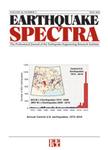版权所有:内蒙古大学图书馆 技术提供:维普资讯• 智图
内蒙古自治区呼和浩特市赛罕区大学西街235号 邮编: 010021

作者机构:School of Computational Science and Engineering Georgia Institute of Technology AtlantaGA United States School of Computer Science Georgia Institute of Technology AtlantaGA United States School of Computing Instruction Georgia Institute of Technology AtlantaGA United States School of Civil and Environmental Engineering Georgia Institute of Technology AtlantaGA United States
出 版 物:《Earthquake Spectra》 (Earthquake Spectra)
年 卷 期:2025年
核心收录:
学科分类:1205[管理学-图书情报与档案管理] 1201[管理学-管理科学与工程(可授管理学、工学学位)] 07[理学] 0708[理学-地球物理学] 0837[工学-安全科学与工程]
基 金:The author(s) disclosed receipt of the following financial support for the research authorship and/or publication of this article: The work presented in this manuscript was supported in part by the US National Science Foundation under Grant CMMI 1828118. The opinions expressed herein are those of the authors and not the sponsor. Additional support was provided by the Elizabeth & Bill Higginbotham Professorship at Georgia Tech
主 题:Tweets
摘 要:The development of artificial intelligence (AI) provides an opportunity for rapid and accurate assessment of earthquake-induced infrastructure damage using social media images. Nevertheless, data collection and labeling remain challenging due to limited expertise among annotators. This study introduces a novel four-class Earthquake Infrastructure Damage (EID) assessment data set compiled from a combination of images from several other social media image databases but with added emphasis on data quality. Unlike the previous data sets such as Damage Assessment Dataset (DAD) and Crisis Benchmark, the EID includes comprehensive labeling guidelines and a multiclass classification system aligned with established damage scales, such as HAZUS and EMS-98, to enhance the accuracy and utility of social media imagery for disaster response. By integrating detailed descriptions and clear labeling criteria, the labeling approach of EID reduces the subjective nature of image labeling and the inconsistencies found in existing data sets. The findings demonstrate a significant improvement in annotator agreement, reducing disagreement from 39.7% to 10.4%, thereby validating the efficacy of the refined labeling strategy. The EID, containing 13,513 high-quality images from five significant earthquakes, is designed to support community-level assessments and advanced computational research, paving the way for enhanced disaster response strategies through improved data utilization and analysis. The data set is available at DesignSafe: https://***/10.17603/ds2-yj8p-hs62. © The Author(s) 2025.